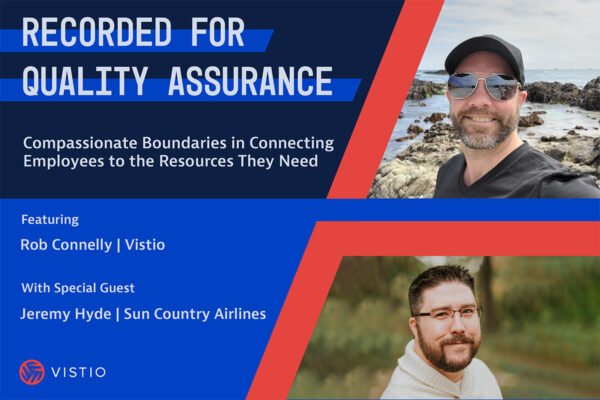Watch to the full podcast here:
Or click here to just listen to the audio.
Today we welcome back Jeremy Hyde Director of Customer Service for Sun Country Airlines to discuss how to appropriately help employees who are facing crisis in their personal life.
[ 9:18 – 10:19 ] Employee performance issues may alert us to the fact that they are going through some sort of a difficult situation. Let’s talk about how to approach an employee and have a conversation that is candid, sympathetic and respectful.
[ 10:26 – 10:57 ] Boundaries are so important in interpersonal communication. We tend to overstep boundaries when we are too optimistic about motives, abilities and intentions. In these ways we may inadvertently hurt someone we are trying to help. For example, we might try to cover for someone whose performance is lacking, only to see that backfire when the individual goes too long without getting the the help they really need to address the root of their issue.
[ 11:22 – 13:46 ] If someone comes to us to make me aware of something they are going through. We shouldn’t press for details; instead, just ask them what they think they need. What does this look like? Sometimes we can connect them with HR and FMLA so they can have the time and energy to focus on working through their personal issue, knowing their job is protected during this time.
[ 14:02 – 15:15 ] Create a culture of “what do you need?” Get them access to the resources they need without making them uncomfortable about oversharing.
Remember to separate the conversation about their performance issue from the conversation about connecting them with help that is available to them.
[ 18:49 – 20:46 ] We need to normalize mental health and wellness. We need to make resources more available, talk about our EAP, an encourage employees to actively engage in general wellness.
For so long in American culture we’ve admired hustle and bragged about working ourselves to the bone, clearly neglecting our health. Now we’re starting to move toward positive health. As leaders If I’m not healthy for me? How can I help you be healthy for you?
[ 26:23 – 27:22 ] As leaders can we model the appropriate level of transparency and model recognizing when we need help.
Andrea’s question: What advice to you have for convicting Contact center leadership to buy into caring about the wellness of the team?
[ 30:26 – 31:32 ] The best way to bring about change is to understand the cost of not changing. Come with solutions not just problems.
[ 32:09 – 32:26 ] When we talk about the customer experience that we want our agents to provide, what we are really doing is hoping that the humans who work with us will interact in a helpful way with the humans who buy from us.
To listen to a recording of this and other episodes, visit www.vistio.io/podcasts. And to join our show live each week, go to www.vistio.io/cxlive.

